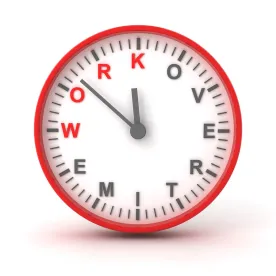As our readers are aware, we have devoted a good amount of space to discussing the status of the Department of Labor’s (DOL) final rule on exemptions from overtime under the Fair Labor Standards Act (FLSA). After a topsy-turvy year-and-a-half, in which multiple courts’ issues opined on the status of that rule, we recently asked “What Ever Happened to the Department of Labor’s New Overtime Rule?” and promised to keep employers informed of any new developments.
Employers scored a victory with an August 31, 2017 ruling where a United States District Judge in Texas struck down the Obama-era overtime exemption increase. The court’s findings favored more than 55 businesses and 21 states who challenged the Obama’s administration’s overtime increases, concluding that the rule was based on employee salaries instead of job descriptions. The businesses and states argued that the increased labor expenses would be too costly for employers and may hurt workers as well, since some businesses would have been forced to move some salaried employees back to hourly wages. However, while the Obama administration’s increases will not take effect, the Trump administration may make more modest increases to the exemptions.
When the Obama administration DOL unveiled the changes to the overtime policy, it argued that it was merely updating the FLSA to reflect current employment and economic realities. But business groups and many states quickly opposed the rule arguing the increase was too drastic. Before the increases could go into effect in December 2016, the policy was challenged in court and the Texas judge stayed the policy.
The stay stopped the implementation of the Obama administration’s May 2016 rule which would have nearly doubled the overtime exemption from $23,660 to $47,476 for executive, administrative, and professional workers, making many more employees eligible for time-and-a-half pay for work done beyond 40 hours per week. The proposed policy would have also increased the threshold for highly compensated employees from $100,000 to approximately $134,000. Under the proposed increases, over 4 million more employees would have been eligible for overtime pay. In essence, this would have forced employers to pay overtime to many more salaried employees or change their compensation structures to pay more employees hourly wages.
The Obama administration’s goal was to bolster overtime protections which have diminished since the 1970s when such protections applied to over 60 percent of full-time, salaried employees. Only seven percent of employees have those same protections today. The Department of Labor under Obama also tried to increase the exemption thresholds because they have remained unchanged since the Bush administration increased the thresholds in 2004.
Just because the Obama rule will not take effect does not mean that there will not be any new policies for employers to watch out for and implement. If and until the Trump administration decides to increase the overtime limits, the 2004 rule and salary levels will remain in effect. While the Trump administration did oppose the Obama level increases, there are signs that the 13 year-old salary threshold levels may increase.
Secretary of Labor Alexander Acosta said during his confirmation hearing that the policy was due for an update even though he believed the Obama administration’s specific increase was too high. And in July, the DOL issued a request for information for public input and suggestions on ways to improve the Obama administration rule. Now that the Trump administration has the opportunity to propose its own exemption threshold, employers should be prepared for a more modest increase in overtime exemptions.




 />i
/>i
